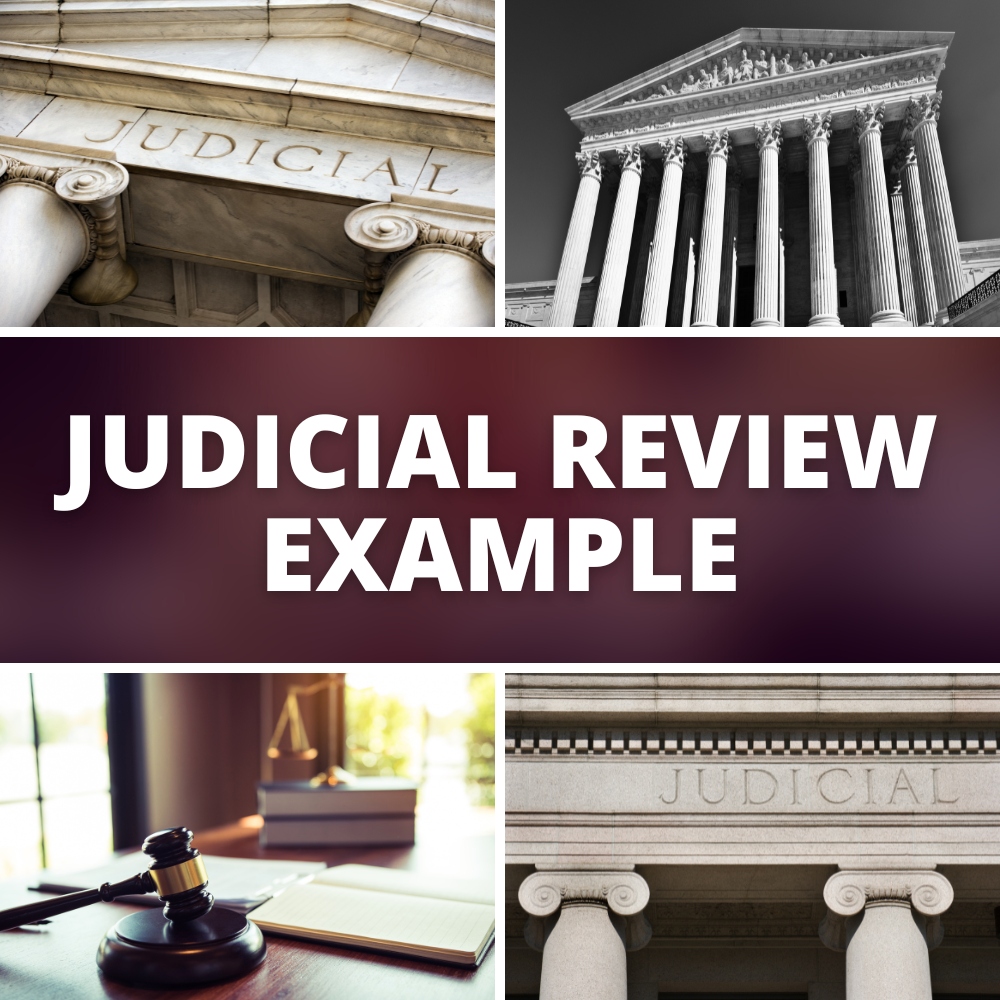10+ Judicial Review Examples
Judicial review is a system that allows the judiciary to review, examine, and modify the decisions and actions of other branches of government. Examples of judicial review can be seen throughout history, as the judiciary is often tasked with upholding the rule of law and ensuring that all government actions are constitutional. This article will take a look at some of the most prominent judicial review examples in action, from landmark Supreme Court cases to more recent examples.
Whether it be protecting the rights of individuals or safeguarding the principles of democracy, judicial review has been a powerful tool of the judiciary for centuries.

Judicial Review Examples
1. Judicial Review Example: The United States Supreme Court Case of Marbury v. Madison (1803) In 1803, the Supreme Court of the United States was asked to determine whether President Thomas Jefferson had acted lawfully in denying William Marbury his commission as justice of the peace in the District of Columbia. Marbury had been appointed to the position by President John Adams, but Jefferson refused to honor the appointment. Marbury then sued the Secretary of State, James Madison, for refusing to deliver his commission.
Chief Justice John Marshall, writing for the majority, declared that the Supreme Court had the authority to review the constitutionality of acts of the President, Congress, and the executive branch. He stated that the President was not allowed to deny Marbury his commission because it had been duly issued and Marbury had a legal right to it. Marshall also held that the Judiciary Act of 1789, which granted the Supreme Court the power to issue writs of mandamus, was unconstitutional because it extended the power of the Supreme Court beyond the scope allowed by the Constitution.
This case stands as one of the most important judicial review cases in United States history, as it established the Supreme Court’s power of judicial review and established the principle that the Supreme Court has the power to declare an act of Congress unconstitutional.
2. Judicial Review Example: The United States Supreme Court Case of McCulloch v. Maryland (1819) In 1819, the Supreme Court of the United States was asked to decide whether the Second Bank of the United States was a legitimate exercise of Congress’s constitutional authority to “make all laws which shall be necessary and proper” for carrying out its powers.
- See also: 20+ Lawyer Review Examples to Copy & Paste
- See also: 30 Defense Closing Statement Examples
At issue was whether the state of Maryland had the authority to tax the Second Bank of the United States, which was a federal institution. In a landmark decision written by Chief Justice John Marshall, the Supreme Court declared that the state of Maryland had exceeded its constitutional authority in attempting to tax the Second Bank of the United States.
Marshall held that Congress’s power to “make all laws which shall be necessary and proper” was an implied power of the Constitution, and that the state of Maryland could not interfere with the federal government’s exercise of this power.
This case was a major victory for judicial review, as it established the principle that the Supreme Court had the power to declare an act of a state unconstitutional.
3. Judicial Review Example: The United States Supreme Court Case of Fletcher v. Peck (1810) In 1810, the Supreme Court of the United States was asked to decide whether a grant of land issued by the state of Georgia was constitutional. The grant of land had been issued to Robert Fletcher and several others in 1795, but a later Georgia state law attempted to invalidate the grant.
The Supreme Court, in a decision written by Chief Justice John Marshall, declared that the later Georgia state law was unconstitutional. Marshall held that the contract clause of the United States Constitution prohibited the state of Georgia from interfering with the contract entered into by Robert Fletcher and the other grantees.
This case was important for judicial review, as it established the principle that the Supreme Court had the power to declare an act of a state unconstitutional.
4. Judicial Review Example: The United States Supreme Court Case of Brown v. Board of Education (1954) In 1954, the Supreme Court of the United States was asked to decide whether the doctrine of “separate but equal” was constitutional in public education. The Supreme Court, in a unanimous decision written by Chief Justice Earl Warren, declared that segregation in public schools was unconstitutional. Warren held that the doctrine of “separate but equal” violated the Equal Protection Clause of the Fourteenth Amendment, as it denied African American children the same educational opportunities that were available to white children. In declaring this doctrine unconstitutional, the Supreme Court established its power of judicial review and established the principle that the Supreme Court had the power to declare an act of a state unconstitutional.
5. Judicial Review Example: The United States Supreme Court Case of Roe v. Wade (1973) In 1973, the Supreme Court of the United States was asked to decide whether a woman had a constitutional right to terminate her pregnancy. The Supreme Court, in a 7-2 decision written by Justice Harry Blackmun, declared that a woman had a fundamental right to privacy that extended to a woman’s decision to terminate her pregnancy.
Blackmun held that this right was protected by the Due Process Clause of the Fourteenth Amendment, and that the state of Texas could not interfere with a woman’s decision to terminate her pregnancy. This case was a major victory for judicial review, as it established the principle that the Supreme Court had the power to declare an act of a state unconstitutional.
More Judicial Review Examples on the next page…